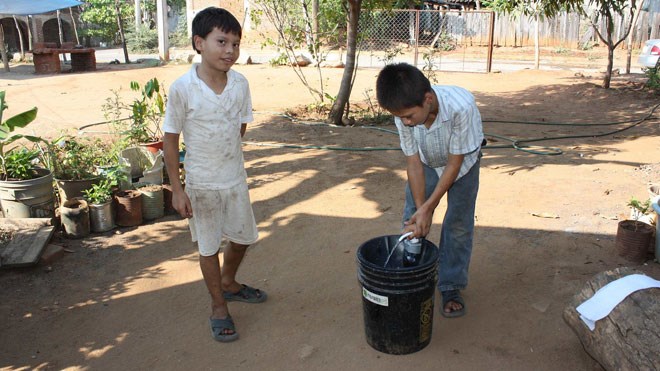Malaria and dengue fever may not exist in Northern Ontario, but a Sudbury-based researcher has developed a method to reduce the populations of mosquitoes that carry the potentially deadly diseases.
Laurentian University chemistry professor Gerardo Ulibarri, who focuses on medial chemistry and preventative health, first became interested in mosquito-borne illnesses when Sudbury had a west Nile virus scare in 2003.
“I saw how the health units in Manitoba and Ontario were fogging streets to control the outbreak,” he said.
He figured there must be a better way to control mosquito populations than to use large amounts of pesticides that can be harmful to wild animals, pets and even human populations.
To deal with the problem in a less harmful way, Ulibarri helped develop an ovitrap – a device that resembles a bucket with a funnel, that uses attractants to lure mosquitoes and have them lay their eggs in the trap.
“If you can collect the eggs, you can destroy the eggs,” Ulibarri said.
The trap features paper landing strips where certain species of mosquitoes – those that carry diseases harmful to humans – lay their eggs.
Every few days a water pump – that is operated manually, or in some models, with an electric motor – washes the eggs down the funnel into a filter.
Once the filter dries, the eggs inside die.
The water at the bottom of the bucket is recycled and used to wash out more mosquito eggs.
Tests in Sudbury found the ovitraps reduced the population of west Nile virus-carrying mosquitoes by 80 per cent in areas surrounding the traps.
The next step was to test the ovitraps in warmer tropical countries, where mosquito-borne illnesses are more common and dangerous to human health, than in the Northern Hemisphere.
Ulibarri conducted a small study, funded by the Pan-American Health Organization, to install his ovitraps in Mexico, north of Acapulco.
The new traps had attractants used to draw in mosquito species that carry dengue fever, a viral infection that has flu-like symptoms and can lead to severe complications and even death.
The World Health Organization estimates there are 50 million to 100 million dengue infections worldwide every year.
An estimated 500,000 people with severe dengue require hospitalization each year, and about 2.5 per cent of those affected die from the disease.
Ulibarri discovered the new ovitraps reduced the dengue-carrying mosquito population by around 70 per cent in a localized area.
To be effective, the traps must be in operation year-round, and the eggs must be rinsed out every two to three days.
For the next stage in his research, Ulibarri has received a $112,000 grant from Grand Challenges Canada to perfect and test his ovitraps in Guatemala, where public health teams will teach local indigenous populations to maintain the traps themselves.
Guatemala was chosen for the next stage of his research because it qualifies as an underdeveloped nation, and was a candidate for the Grand Challenges Canada grant. Mexico, however, is considered developed enough not to qualify for the funding.
“It's ideal that it's happening in Guatemala because we are going to people who really need it,” Ulibarri said. “If you can empower them to reduce mosquitoes by themselves you're going to improve their health.”
In addition to trapping mosquitoes with dengue fever, Ulibarri is perfecting an attractant that would work with the mosquito species that carry malaria.
The parasite infected around 207 million people in 2012, according to the World Health Organization, and killed an estimated 627,000 people worldwide.
The 18-month Guatemala research project is scheduled to begin on Nov. 1, 2014.
It will be one of many worldwide projects to eradicate malaria and other mosquito-borne illnesses.
The Bill and Melinda Gates Foundation has committed nearly $2 billion in grants to combat malaria, and has helped support efforts to create a vaccine.
Biologist Olivia Judson has advocated eradicating 30 mosquito species that carry diseases dangerous to humans by introducing a genetic element which can insert itself into another crucial gene, to create recessive knockout genes.
There are more than 3,300 mosquito species in the world, and many scientists have concluded eradicating the 30 or so species that are dangerous to humans would not destroy ecosystems and reduce the genetic diversity of mosquitoes by only one per cent.
“If we eradicated them tomorrow, the ecosystems where they are active will hiccup and then get on with life,” entomologist Joe Conlon, of the American Mosquito Control Association, told the journal Nature. “Something better or worse would take over.”
